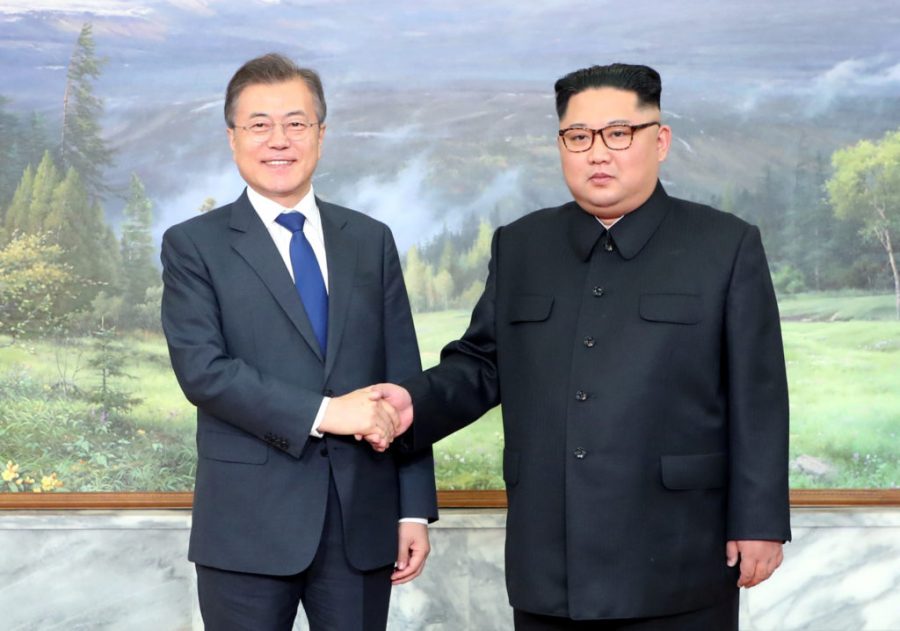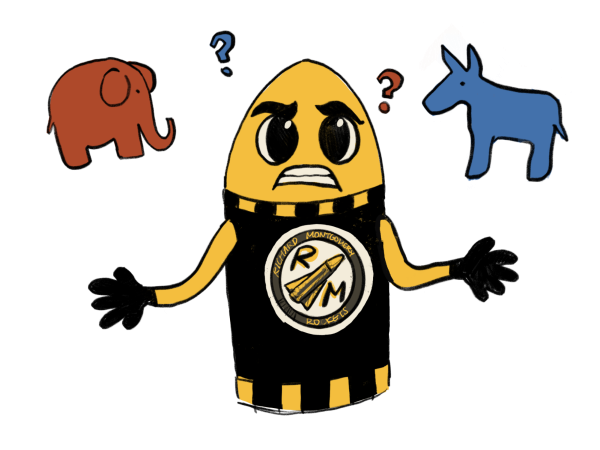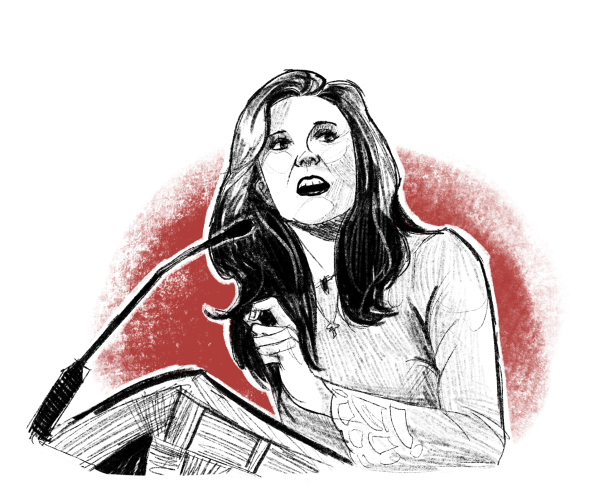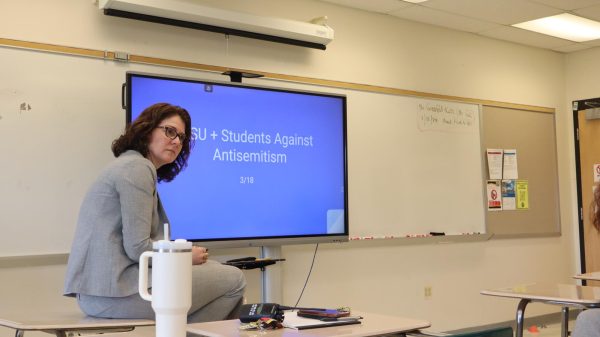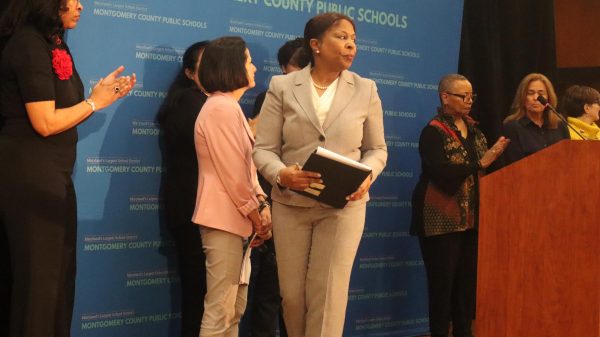Students react to talks of reunification between North and South Korea
Featured photo courtesy of PBS
October 18, 2018
Korea has been split at the 38th parallel since the end of World War II, and the physical divide between the North and South is known as the Korean Demilitarized Zone (DMZ). The Korean War in the 1950s reinforced this split and ended in cease-fire. After the collapse of the Soviet bloc in the early 1990s, North Korea remained a “hermit kingdom” as numerous families were torn apart. Thousands of North Koreans now defect to South Korea every year, risking it all for the possibility of freedom from Kim Jong Un’s clutches.
Although some South Koreans live in fear of Kim Jong Un’s threats to deploy missiles, the unified Korean women’s ice hockey team in the 2018 Pyeongchang Olympics seemed to represent a thawing of tensions between the two countries. Kim Jong Un, the North Korean leader, and Moon Jae-in, the South Korean president, even pursued a joint bid to host the Summer Olympics in 2032. This foreshadowed the momentous peace talks to come.
“The Olympic Games were huge. The spirit of friendly competition during the events really brought people together,” senior Rose Kelly explained. “Both Koreas even walking under the same flag during the opening ceremony was a symbolic gesture to the world that they were forming a relationship.”
Kim Jong Un and Moon Jaein then shared a hug later in September during their third summit in hopes of peace. This brought promising expectations to the possibility of formally ending the Korean War. “The general sentiment in North Korea and South Korea is that a peace treaty would be extremely beneficial,” senior Chloe Noh said. “However, I feel that reunification, on the other hand, is something that isn’t feasible in any of our lifetimes.”
Within the 73 years that North Korea and South Korea have been separated, their economy, culture, and politics have all deviated from each other. CBS reports that the GDP per capita is estimated to be $33,200 in South Korea while North Korea’s GDP per capita is $1,800. North Korea, a communist country led by dynasty politics, is one of the most isolated economies in the world today, but it harbors an abundant amount of natural resources.
“Because South Korea has an emerging economy and is on the verge of becoming a world power, I think that it can truly help North Korea properly use technology to make the most of its natural resources,” junior Kaylen Pak explained. “Nevertheless, because the two countries have already grown starkly different, reunification should be a slow, deliberate process or the effort will be put to waste.”
North Korea has a Communist-controlled economy whereas South Korea has a capitalist economy. CNN estimates that the cost of transitioning during reunification would range from around $500 billion to several trillion dollars.
Regardless of the world’s doubts about reunification, Kim and Moon continued their attempt to connect the two countries in any way possible. On April 27, 2018, the two leaders tackled the issue of separated families by the DMZ. Their agreement to hold temporary reunions in August for these divided families gave citizens a chance to see their loved ones and represented another step in nurturing a relationship between the two Koreas.
“Both of my parents’ families are originally from the Northern areas of Korea, so I know that my grandma had deep connections with the North before the split,” junior Eujin Lee said. “She is excited about the possibility of reunification, as it would allow her to go back to her hometown.”
Most of the participants in the reunions are around 70 years old, hoping to meet their family members once more before they die. Many have not even received word on whether their loved ones are still alive because they cannot exchange emails, phone calls, or letters. While South Korea uses a lottery system to choose the reunion participants, North Korea selects people based on their loyalty to its authoritarian leadership.
Due to the large prospective costs and risks of reunifying, there is still much speculation about the actual plausibility of the plan. “I feel like in a perfect world, it would be great to not have cultural tension between the two countries. But they have developed in such opposite ways that I think right now, the best step they can take is opening up their markets to each other, encouraging tourism and trade,” Noh said. “Then we, as two countries, can finally start to peacefully coexist.”


